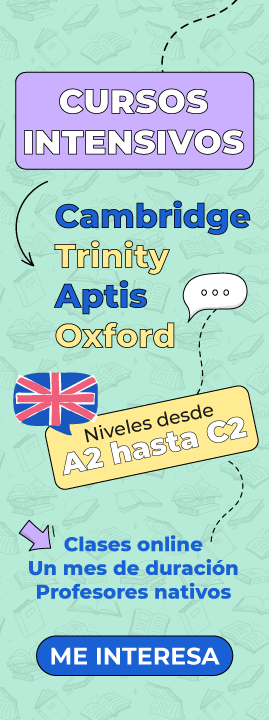Future continuous

The “future continuous” refers to an unfinished action or event that will continue to occur after the present moment.
ÍNDICE DE CONTENIDOS
It is used for a considerable variety of purposes. In addition, it can be used to project ourselves into the future.
How is the future continuous formed in English?
Unlike other tenses (even continuous tenses), ‘Future Continuous’ can work with both ‘Will’ and ‘Going to’. But this should not worry us because both are very similar in practice. You should get used to it, as it occurs in other futures in English.
Thus, by way of example, affirmative sentences in ‘Future Continuous’ have either the following structure: Subject + ‘will be’ + verb + ing; or: Subject + ‘To be’ + ‘going to be + verb + ing. We will also see its negative and interrogative forms!
What is the “Future Continuous” used for?
For temporary actions that will be in progress at a certain time in the future. Actions that are happening at the time of the future that we indicate:
- I will be playing tennis with Pedro at 10 am tomorrow.
Estaré jugando tenis con Pedro mañana a las 10 a.m.
- For things that are already planned – Actions that have already been planned in advance
- Lucky you! At this time tomorrow, you will be swimming in the Caribbean.
¡Eres afortunado! Mañana a esta hora estarás nadando en el Caribe.
- It arises: First conditional – Conditional one: If + Present / When + Present Subjunctive, Future continuous
- If you arrive early, I will be waiting for you.
Si llegas temprano, estaré esperándote / te estaré esperando (Si (If) + Present, Future)
Structure of the ‘Future Continuous’ in English
To construct its affirmative form, the simple future of the auxiliary verb TO BE and the main verb with the ending ING are used:
| I will be working | Yo estaré trabajando |
| You will be working | Tú estarás trabajando |
| He will be working | Él estará trabajando |
| She will be working | Ella estará trabajando |
| It will be working | Él/ella estará trabajando |
| We will be working | Nosotros estaremos trabajando |
| You will be working | Ustedes estarán trabajando |
| They will be working | Ellos estarán trabajando |
The interrogative form is constructed by placing the auxiliary WILL before the pronoun followed by the verb TO BE in its infinitive form and the main verb with the ending ING:
| Will I be working? | ¿Estaré trabajando? |
| Will you be working? | ¿Estarás trabajando? |
| Will he be working? | ¿Estará trabajando? |
| Will she be working? | ¿Estará trabajando? |
| Will it be working? | ¿Estará trabajando? |
| Will we be working? | ¿Estaremos trabajando? |
| Will you be working? | ¿Estarán trabajando? |
| Will they be working? | ¿Estarán trabajando? |
The negative form is achieved by placing the negation NOT between the auxiliary WILL and the verb TO BE, followed by the main verb with the ending ING:
| I will not be working | No estaré trabajando |
| You will not be working | No estarás trabajando |
| He will not be working | No estará trabajando |
| She will not be working | No estará trabajando |
| It will not be working | No estará trabajando |
| We will not be working | No estaremos trabajando |
| You will not be working | No estarán trabajando |
| They will not be working | No estarán trabajando |
Here we see other examples:
- Susan will be cooking tonight.
Susan estará cocinando esta noche.
- Will Susan be cooking tonight?
¿Estará Susan cocinando esta noche?
- Susan will not be cooking tonight.
Susan no estará cocinando esta noche.
- We will be visiting our friends this afternoon.
Nosotros estaremos visitando a nuestros amigos esta tarde.
- Will we be visiting our friends this afternoon?
Estaremos nosotros visitando a nuestros amigos esta tarde?
- We will not be visiting our friends this afternoon.
Nosotros no estaremos visitando a nuestros amigos esta tarde.
The future continuous verb tense is used primarily to express actions that will be occurring at a specific time in the future, to make predictions about the future, and to politely ask for information about the future.
| Form | Structure | Examples |
| Affirmative | Sujeto + will + be + verbo (in gerund) | She will probably be having a shower. Ella probablemente se estará duchando. |
| Negative | Sujeto + won’t + be + verbo (in gerund) | You won’t be sitting here all day, will you? No estarás sentado aquí todo el día, ¿no? |
| Interrogative | Will + sujeto + be + verbo (in gerund) | Will you be using the laptop today? ¿Usarás el portátil hoy? |
It is important to note that the future continuous is only used with action verbs because it is possible to do so for a duration. (Action verbs describe activities like running, thinking, and seeing. Stative verbs describe states of existence, like being, looking, and knowing). Using the present participle construction will + be + with a stative verb would sound very strange.



